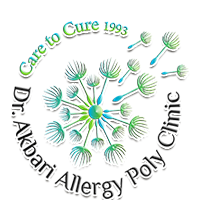These drugs are only to relieve the symptoms and control the disease faster. The amount of use and its duration depends on the severity of the attack and chronicity and the type of the disease, and it is usually 2-3 times a day for 3-7 days and in case of complete control. Symptoms are preferably reduced.
If you manage to reduce the medication gradually, investigate the non-implementation of your prevention principles or consult a doctor to change the type and amount of medication.
In case of any drug incompatibility or unwanted side effects, while stopping the drug, consult a doctor immediately in case of liver, kidney, cardiovascular, diabetes, epilepsy, thyroid and prostate diseases, or conditions such as pregnancy, breastfeeding, and in case of use blood pressure medications, codeine, pain relievers, and contraceptives to avoid drug interactions or worsening of your illness and coordination between respected specialists, inform the subject if you have to take long-term and regular anti-allergic oral medications with the help of your doctor More diagnosis should be done. So that you only take medicine for several days after the attacks.
